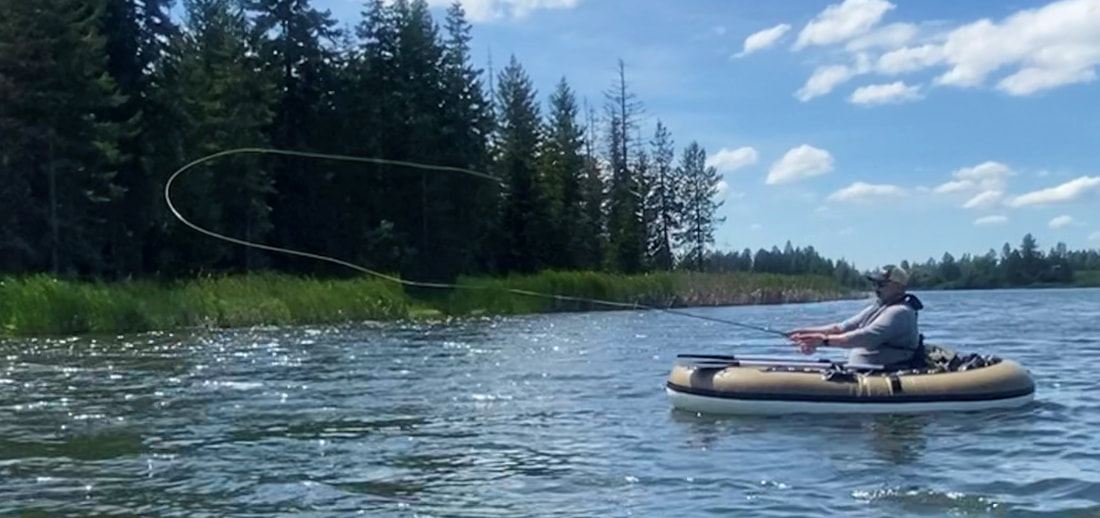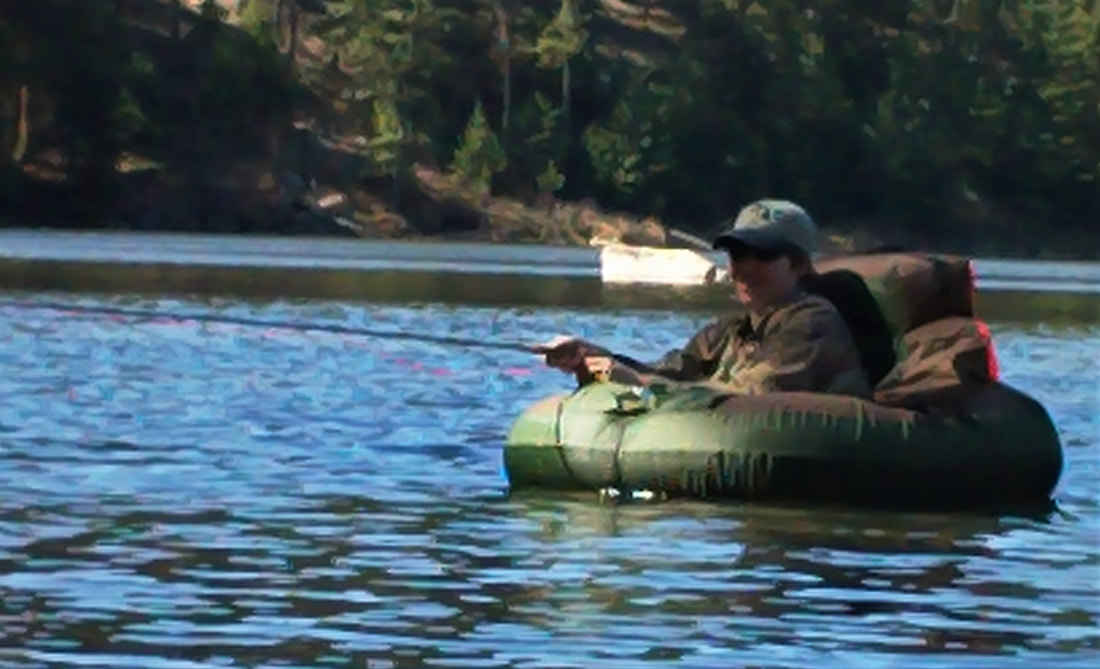|
By Norvise ambassador Brittany Davenport. Are your favorite trout rivers blown out due to runoff or spring rains? Here in Idaho, we have a nice window of trout fishing pre-runoff. But once the snow pack starts to melt, well, it just makes more sense to look for other options until the flows subside a bit. (Not that trout can’t be caught during run off… but that’s a topic for another day and another blog post! In past few years, I was introduced to lake fishing, and specifically, fishing for panfish. When I started fly fishing, I jumped straight to trout fishing—and somewhat overlooked fishing for panfish, the typical gateway drug for many folks. I have been eagerly awaiting the arrival of spring temps, and the local lakes and reservoirs to ice out and start warming up a bit. We’ve had a couple nice warm spring days to tempt us, and it is finally time! Spring fishing for panfish can also be a great cabin fever reliever if you have been stuck inside all winter. Spring fishing for panfish is also a great opportunity to bring a child or new fly fisher along. Panfish have a way of bringing out the kid in any angler, even the seasoned ones! They are a willing target, and a blast to catch, for anglers of any age! Now let's talk gear. First, be sure to have a good pair of polarized sunglasses. This will help cut the glare on the water and make it easier to see fish in the shallow waters. I like to use a 4 wt rod. Mine are 9’, but a shorter one is adequate. Some folks drop down to a 3 or 2 wt rod. The catching is more fun, that is for sure! But if you encounter wind, you are at more of a disadvantage with those lighter setups. Any time you are lake fishing, it is beneficial to have a variety of fly lines—a weight forward, and various sinking lines. However, when targeting panfish in the spring, a WF will do just fine. I like to use a 7 1/2’ 4x or 5x leader. You can also purchase some poly sinking leaders, if you want to get just a little deeper. The nice thing about spring fishing is that the fish are generally in the shallower, warmer areas of the lake. Also be sure to bring along some indicators (ie. Bobbers) to suspend flies from. As for flies, general lake fishing patters are adequate. Thankfully, panfish usually aren’t extremely picky. And during the spring, the bull panfish are more aggressive. Flies with movement are a safe bet. You can use some high floating flies, like a small popper, as an indicator as well. I like to use wet flies, small streamers, and small bead head nymphs. A chartreuse copper john will likely always be one of my favorites for panfish. They just can’t resist. Editors note: the Norvise Fine Point Conversion is perfect for tying the type of flies Brittany is talking about here. As for access, we really love to fish our lakes and reservoirs from our Maxxon XPW-239s. They allow for great fishing, maneuverability, comfort, and I can pack both of them down and fit them in the back of my Subaru. You can use a pontoon or belly boat (float tube). However, the water is still on the colder end of things, so be sure to wear your waders, and appropriate layers underneath. If the bottom of lake is firm, you can wade along the shoreline-and fish parallel to it. If the bottom is soft however, your best bet is to stay on shore. Be sure to watch your back cast! The other options would be a boat, kayak or canoe. Use what you have. Simple as that. And if you don’t have any watercraft, stick to the docks, shore, etc. You can still find plenty of fish. Now for tactics—so at this point in the year, panfish will be moving into the shallower, warmer water. Fishing is usually best once the sun has warmed up the surface water. So it does afford some sleeping in, and enjoying your coffee in the morning, before you have to get out. Often times, bays and coves will be a bit warmer than the rest of the lake. These warmer areas often have the newer weed growth, which draws plankton and aquatic insects, which are food sources for the panfish. Crappie typically spawn in 5 to 6 feet of water or more, while bluegills are shallower, in 1 to 5 feet of water. Keep in mind though, that often, the bigger blue gills will hang out in the 4 to 6 foot range, with the smaller fish being in the shallower water. One effective way to target them in the spring (and any time really) is to float a fly under an indicator, or buoyant dry fly. Set the depth accordingly. If you find a weed bed, set the depth so you are fishing just over top of it. Use flies that have plenty of movement, to elicit a strike from the bull fish. As to presentation, you can let it sit and twitch it occasionally, or use a slow retrieve with a number of pauses in it. If you find you are catching smaller fish, try using a bigger presentation, or a heavier one, that will drop quicker. Often times the bigger panfish hang out below the smaller ones. There is a great amount of information available on the web, about fishing for panfish in the Spring. If it peaks your curiosity and cabin fever, a quick google search can keep you busy for hours. If you do the Facebook thing, there is a great group called Panfish on the Fly, that is also a source of great information. As we look forward to warmer summer days, while our rivers are blown out, panfish can offer us a much needed excursion to wet a line. I truly believe, that no matter an anglers experience, we can all have a dang good time fishing for panfish. There is just something about it that brings us back to simpler times and makes us feel like a kid again.
And on that note… bring a kid or new angler along with you. They will forever remember their time spent with you chasing the eager little fish at your local pond. Till next time... Tight lines. |
Archives
June 2024
Categories
All
|









 RSS Feed
RSS Feed
